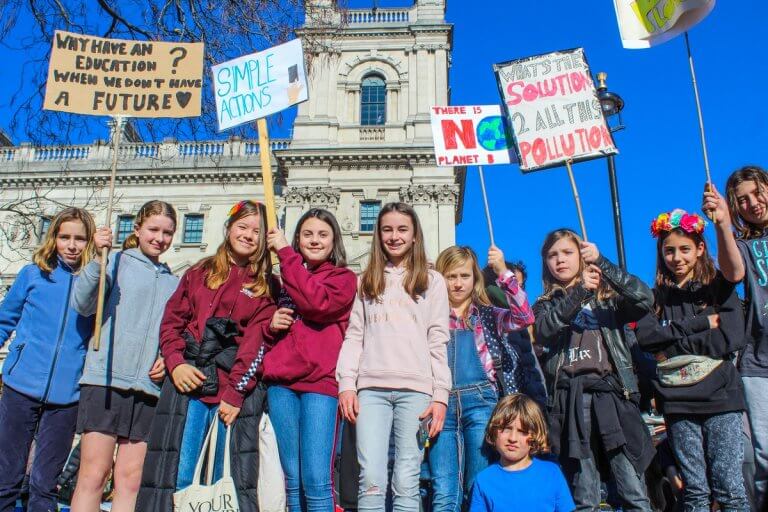
So much has been discussed around how best to prepare students for the future of work and jobs that don’t yet exist. However, little has been done to prepare young learners for the reality of climate change and the world they will soon inherit.
Swedish teenage climate activist Greta Thunberg has already galvanised students on almost all corners of the globe, engaging them in school strikes that call for radical action to tackle the climate crisis.
While critics argue that it should never have come to the point where children have to resort to missing their education for the political inaction of the world’s climate crisis, what can teachers and schools do to play a role in tackling the problem and facilitate students’ understanding of the matter?
Should climate education be a mandatory curriculum in schools?
Action on climate change must start in the classroom. It is essential that we start teaching the real world impacts of climate change, on both individuals & communities, in our schools. We must mainstream climate change into our curriculum. @thecarbontrust @Ashden_org @theCCCuk pic.twitter.com/Yuq4R1CKEi
— Richard Rugg 🌍 (@RichardRugg) February 26, 2019
A 2018 Yale Program on Climate Change Communication report found that Americans “overwhelmingly” support schools in providing a climate education. While there are those who believe schools have a duty to prepare students for the climate crisis, there are still many challenges facing schools and teachers.
The Yale report notes that teachers may not be adequately trained to teach climate science; they note: “Recent research published in Science found that many teachers are themselves not certain about climate change. For example, only 30 percent of middle school and 45 percent of high school science teachers understand the extent of the scientific consensus.
“Furthermore, of the educators who do teach climate change, many suggest the cause is ambiguous or uncertain to their students, while 30 percent actually incorrectly teach that global warming is naturally caused. Correcting the misperception about the scientific consensus that global warming is happening and human-caused is a key educational challenge for both teachers and students.”
Within the American context, other obstacles include the introduction of bills that could block climate science from being taught in schools. The Pacific Standard reported that several states have introduced bills that could interfere with the teaching of scientifically-founded theories on climate change in public school science curricula.
Meanwhile, a New York Times article from 2017 aptly highlighted how students themselves could be a barrier to climate science teaching in schools, with disagreements over whether climate change is human-caused or natural.
How can schools play a part in tackling climate change?
Teaching climate change can be a charged topic. The key is to provide facts and tools—but let the students draw conclusions. https://t.co/N8q65Z74ha pic.twitter.com/yAv2vLjhcA
— SchoolLibraryJournal (@sljournal) March 5, 2019
While schools in different countries have different challenges in introducing climate science education, a 2016 UNESCO (United Nations Educational, Scientific and Cultural Organization) report titled Getting Climate-Ready: A Guide for Schools on Climate Action said schools can consider a whole-school approach whereby everyone – from educators, administrators, to the community and students – play a role in making the school sustainable.
One example includes taking steps to become climate-friendly. Educators can ask students to brainstorm things that make the school unsustainable, before writing a vision, mission and values that summarise the school’s understanding of climate action and applying it in everyday life.
While a fixed curriculum on climate science in schools isn’t yet available for every teacher, educators should keep abreast and educate themselves about the topic. There are also numerous resources online that parents and teachers can share with their children or students.
These include the Stanford School of Earth, Energy and Environmental Sciences Climate Change Education, which has resources for middle and high school students to learn from. Here, students have access to an introduction on climate change, mitigation strategies, debates surrounding the topic, and many other things.
Liked this? Then you’ll love...
These universities are leading the fight against climate change
This US state wants its schools to teach climate change – but only a little







